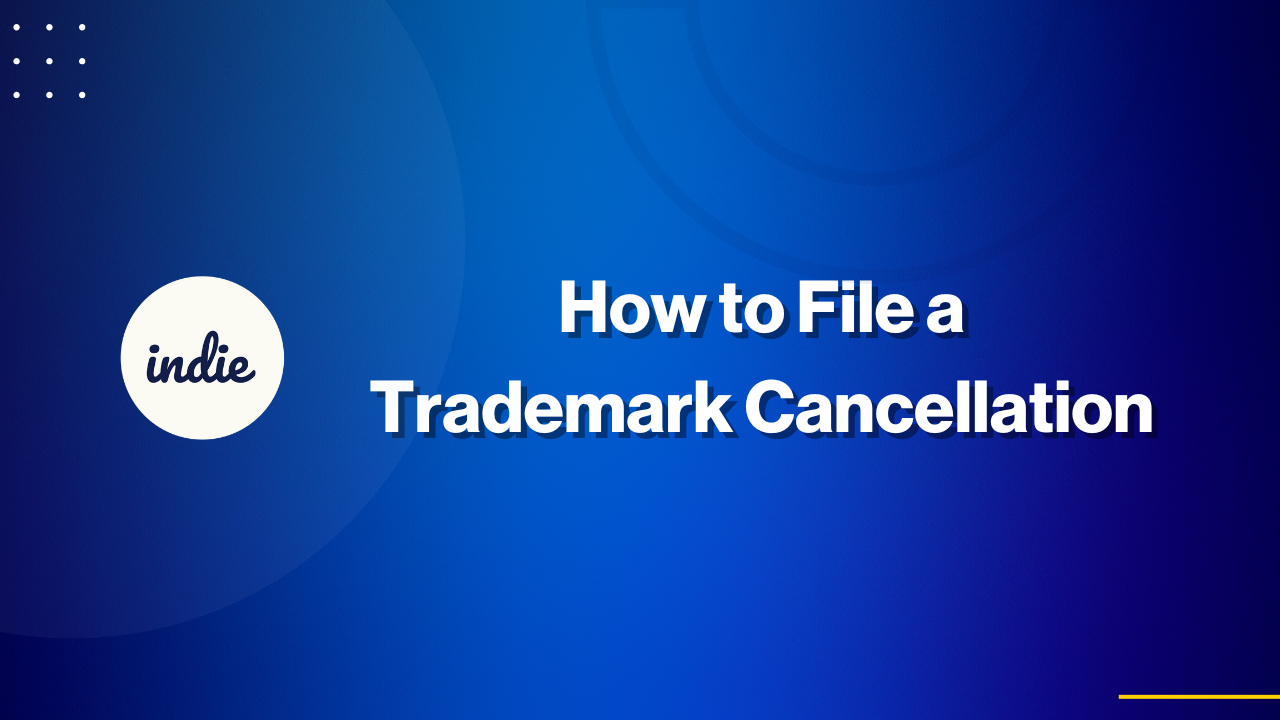In this article, we’ll explain what trademark cancellation is, when you can file one, and the updated process to cancel a trademark in the United States as of May 2025. We’ll also share practical tips for working with an attorney to improve your chances of success.
What is a Trademark Cancellation?
A trademark cancellation is a legal process to remove a registered trademark from the federal register. In the U.S., this process is handled by the Trademark Trial and Appeal Board (TTAB), a part of the United States Patent and Trademark Office (USPTO).
When a trademark is canceled, it no longer enjoys federal protection. This means the owner can’t stop others from using similar marks and the trademark won’t appear in the USPTO’s records.
For more information, visit the USPTO’s Cancellation Proceedings page.
When Can You File a Trademark Cancellation?
Here are some common reasons to file a cancellation:
Non-Use or Abandonment: If the owner hasn’t used the trademark for three years or more, it may be considered abandoned.
Genericness: If the trademark has become a generic term for a product or service, it can be canceled.
Likelihood of Confusion: If the mark conflicts with your earlier rights, you can challenge it.
Fraud: If the registration was obtained through false statements, it’s a ground for cancellation.
Violation of Section 2(a): If the mark is immoral, deceptive, or scandalous, it may be canceled.
These grounds are detailed in 15 U.S.C. § 1064.
Deadlines for Filing a Cancellation
Timing is crucial! Here’s how it works:
- Within the First Five Years: You can challenge the registration on any of the above grounds.
- After Five Years: You can only challenge it on specific grounds like abandonment, genericness, fraud, functional use, or violation of Section 2(a).
Recent Updates (May 2025): New Filing Platform and Fees
Here’s what’s changed recently:
New Filing Platform: TTAB Center
As of May 12, 2025, the USPTO launched a new platform called the TTAB Center for filing trademark cancellations. This system replaces the old Electronic System for Trademark Trials and Appeals (ESTTA), which will be retired on July 12, 2025.
The TTAB Center offers improved features like secure login, draft saving, and centralized access to all TTAB filings. Learn more about the new system on the USPTO TTAB Center page.
Updated Filing Fees
The USPTO recently updated its fee schedule. As of January 19, 2025, the fee for filing a cancellation is $600 per class of goods or services. Visit the USPTO Fee Schedule for the latest rates.
Step-by-Step Process to File a Trademark Cancellation
Here’s the updated step-by-step process:
Step 1: Check the Trademark Status
Use the USPTO’s TSDR system to confirm that the trademark is registered and gather details like the registration number and owner’s information.
Step 2: File a Petition for Cancellation
You’ll need to file a Petition for Cancellation through the new TTAB Center. The petition should include:
- Your name and contact information
- The registration number of the trademark you’re challenging
- The legal grounds for cancellation
- A clear explanation of why the mark should be canceled
Remember to pay the filing fee of $600 per class.
Step 3: Serve the Petition
After you file, you must serve (send) the petition to the trademark owner so they have a chance to respond.
Step 4: Wait for a Response
The trademark owner has 40 days to file an answer with the TTAB. If they don’t respond, you may win by default.
Step 5: Discovery Phase
If the owner responds, the case moves to discovery. During this phase, both sides exchange evidence and information, including:
- Written questions (interrogatories)
- Requests for documents
- Requests for admissions
Discovery usually lasts several months.
Step 6: Trial and Decision
If the case isn’t settled during discovery, it goes to trial before the TTAB. Unlike traditional trials, TTAB trials are usually done in writing through legal briefs and evidence submissions.
The TTAB reviews everything and issues a decision. If they agree with your arguments, they’ll cancel the trademark.
Recent Trends: Trademark Cancellations on the Rise
According to the USPTO Annual Report 2024, there were over 1,200 cancellation proceedings filed in 2024—a 15% increase from the previous year. This trend highlights how more businesses are taking action to protect their brands and challenge improper trademark registrations.
Source: USPTO Annual Report 2024.
Work with a Trademark Attorney for Success
Trademark cancellation proceedings can be tricky and involve strict deadlines and detailed evidence. Here’s why it’s smart to work with a trademark attorney:
- Legal Expertise: An attorney will help you choose the right grounds for cancellation.
- Strong Case Building: They’ll guide you in gathering and presenting your evidence.
- Avoid Mistakes: Small errors can hurt your case—an attorney can help you avoid them.
Conclusion: Protect Your Brand with Trademark Cancellation
Filing a trademark cancellation can be a powerful way to protect your brand and ensure that only valid trademarks stay on the register. But because the rules can be complex and the process is evolving, it’s wise to consult an experienced attorney to help you navigate the system.
For more information, check out the USPTO’s guide to cancellation proceedings or consult a trademark lawyer to discuss your specific needs.
This article is for general information only and does not constitute legal advice. For help with your specific situation, speak with a qualified trademark attorney.

